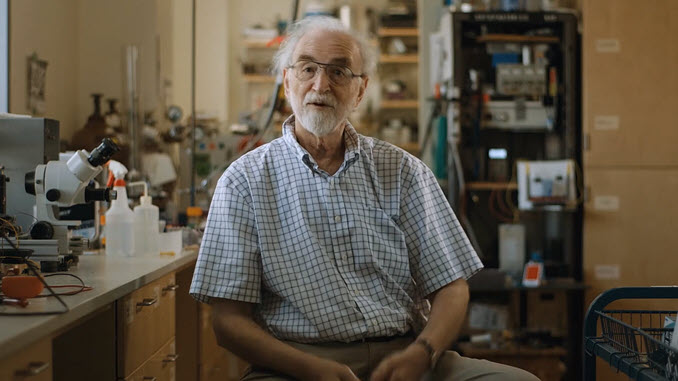
Our Hero of the Week, Prof. Gerald Pollack, belongs to that group of innovative thinkers who have the capacity to change a whole scientific paradigm. His discovery of the “fourth state of water”—also termed “EZ (exclusion zone) water” and “interfacial water”—has done just that. The biochemistry and microbiology of the cell will never be the same.
Certainly, Pollack was not the first and only scientist to look at the role of structured water in biological action; others like Gilbert Ling, Alfred Szent-Györgyi, Mae-Wan Ho—and, over 100 years ago, the biologist William Bate Hardy—already had suggested that water molecules at interfaces form in liquid crystalline layers.
But it is the meticulous execution of experiments and the professional expertise of Dr. Pollack and his team that led to the breakthrough publication of cellular water forming a liquid crystal lattice. The results are irrefutable and have been documented repeatedly, regardless of the offhand dismissal by some members of the scientific establishment.
Prof. Pollack’s own university—the University of Washington, where Dr. Pollack maintains a research lab on the study of water—has recognized the significance of his findings. In 2008, the university conferred the highest distinction it could give to its own faculty, the “Annual Faculty Lecturer Award”, for his research on water. Other awards include the prestigious “Prigogine Medal for Thermodynamics” in 2012 and the Honorary Professorship of the Russian Academy of Science in 2005, to name but a few of many (see the full list of honors and awards in Dr. Pollack’s own CV).
All of his three most important books won distinguished and excellence awards. In his 1990 book, Muscles and Molecules: Uncovering the Principles of Biological Motion, Prof. Pollack describes the mechanism by which muscles contract and relax, which was already based on the recognition that cellular water plays a role.
This led to the 2001 publication, Cells, Gels and the Engines of Life: A New Approach to Cell Function, which details the role of cell water and the gel-like state of the cytoplasm. (See reviews of the book published in Nature and Annals of Botany in 2003.)
The research culminated in 2013 in the publication of The Fourth Phase of Water: Beyond Solid, Liquid and Vapor in which Dr. Pollack describes how water is not always H2O but also occurs in a fourth phase of structured water with a chemical formula of H3O2.
Since 2005, Prof. Pollack has organized and chairs the annual international “Conference on the Physics, Chemistry and Biology of Water” that brings together the latest insights from water research worldwide; exceptional scientists such as V.L. Voeikov or the late Prof. Luc Montagnier have been among the event’s regular contributors.
Dr. Pollack is also the founding editor-in-chief of the scientific journal Water and the initiator of the Institute for Venture Science, an affiliation of researchers exploring new ideas of science that are not funded or that challenge existing paradigms.
For too long, biochemistry has left out water from the molecular equation. Prof. Pollack’s visionary thinking, coupled with painstaking experimental work and a profound understanding of the simplicity of nature, has brought it back. The science of the future will ultimately recognize that fact.
Related:
Watch the upcoming Solari Future Science Report on Liquid Crystal Water with Prof. Gerald Pollack
The Pollack Lab homepage
University of Washington, Department of Bioengineering, Prof. Gerald Pollack
views: 11
